In one of America’s most sought-after urban neighborhoods, San Francisco’s Pacific Heights, stands a newly listed home designed by one of the most acclaimed Bay Area architects of the past century: William Wurster.
Although Wurster designed landmarks like Ghirardelli Square as well as campus buildings at UC Berkeley (where he became the architecture school dean in 1950) and Stanford University, he was best known for designing hundreds of California houses from the 1920s through the ’40s. 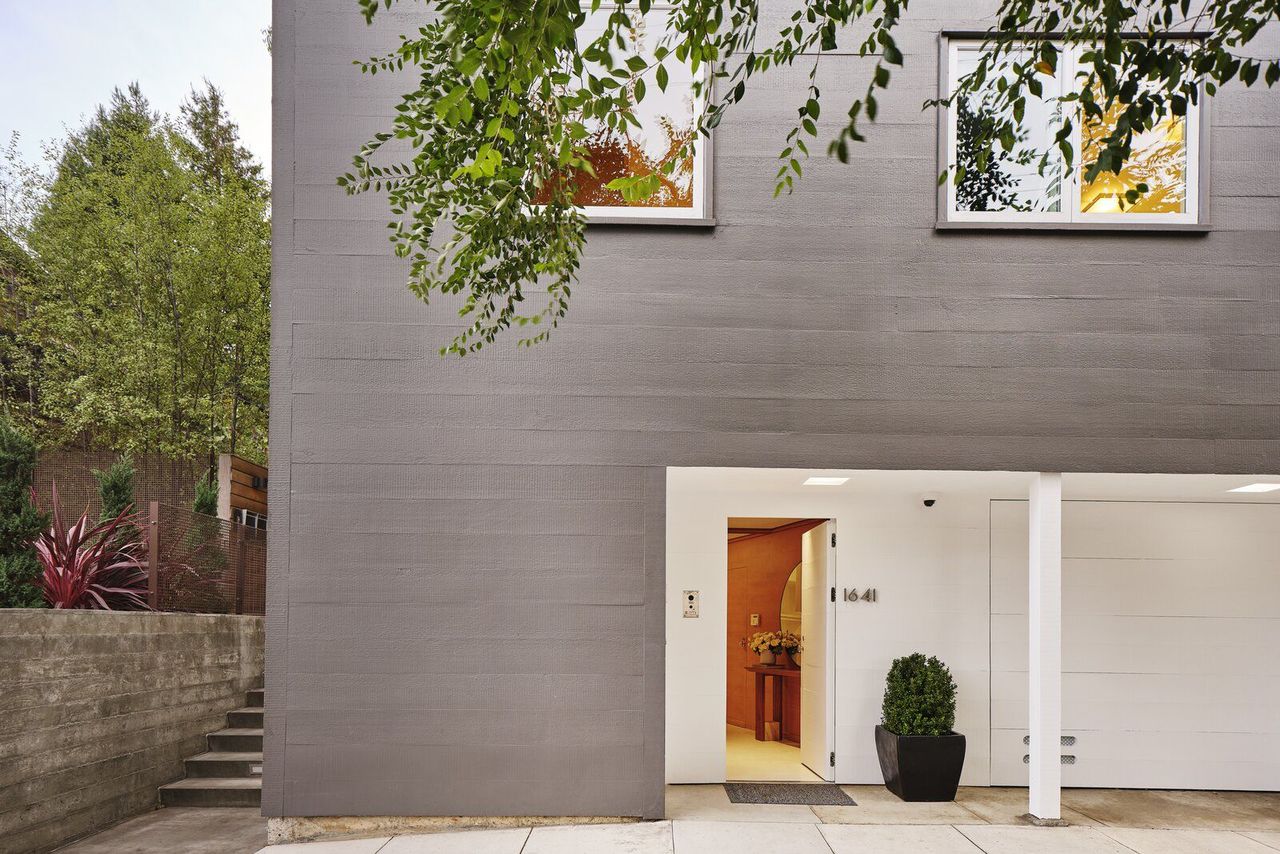
The entrance is carved into the front of the house-a design move that provides shelter on rainy San Francisco days.
Constructed in simple forms with locally sourced wood, these homes helped define contemporary residential architecture. Wurster’s 1928 Gregory Farmhouse in Scotts Valley, California, is even regarded as a kind of prototype for what became the ubiquitous ranch house.
The home Wurster designed at 1641 Green Street in Pacific Heights is no ranch, but instead it’s an exercise in higher-density urban living-its garage door greets visitors at the edge of the sidewalk, while the living areas are located on the upper floors. Even so, the back of the property holds a surprisingly lush garden area evocative of the more pastoral settings one associates with ranch houses. 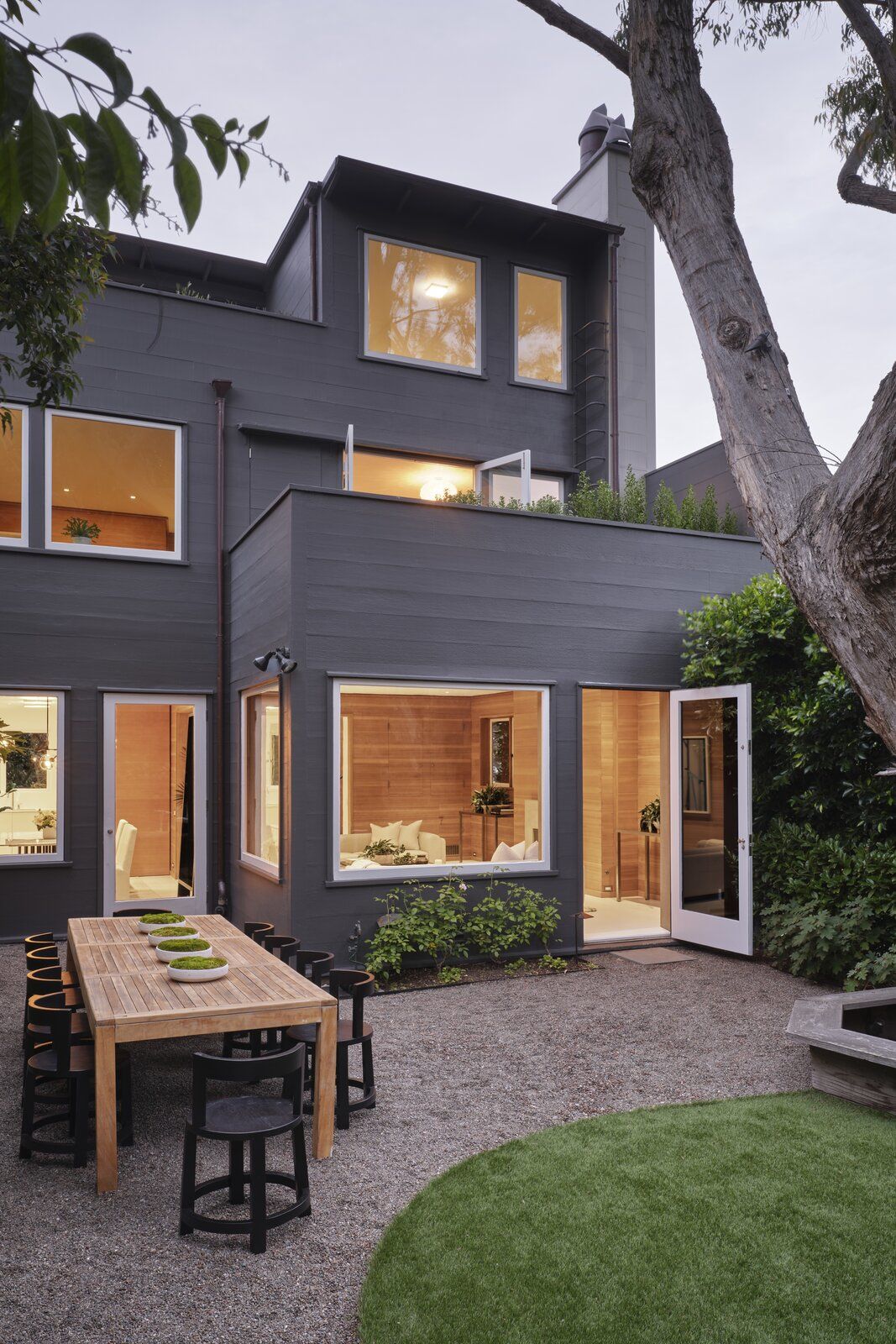
The house steps down to its back garden with a series of terraced balconies.
While many nearby residential buildings are essentially duplexes, with second units at the rear of their rectangular hilltop lots, this home reserves more than half of its overall property for green space, including a tall, mature eucalyptus tree.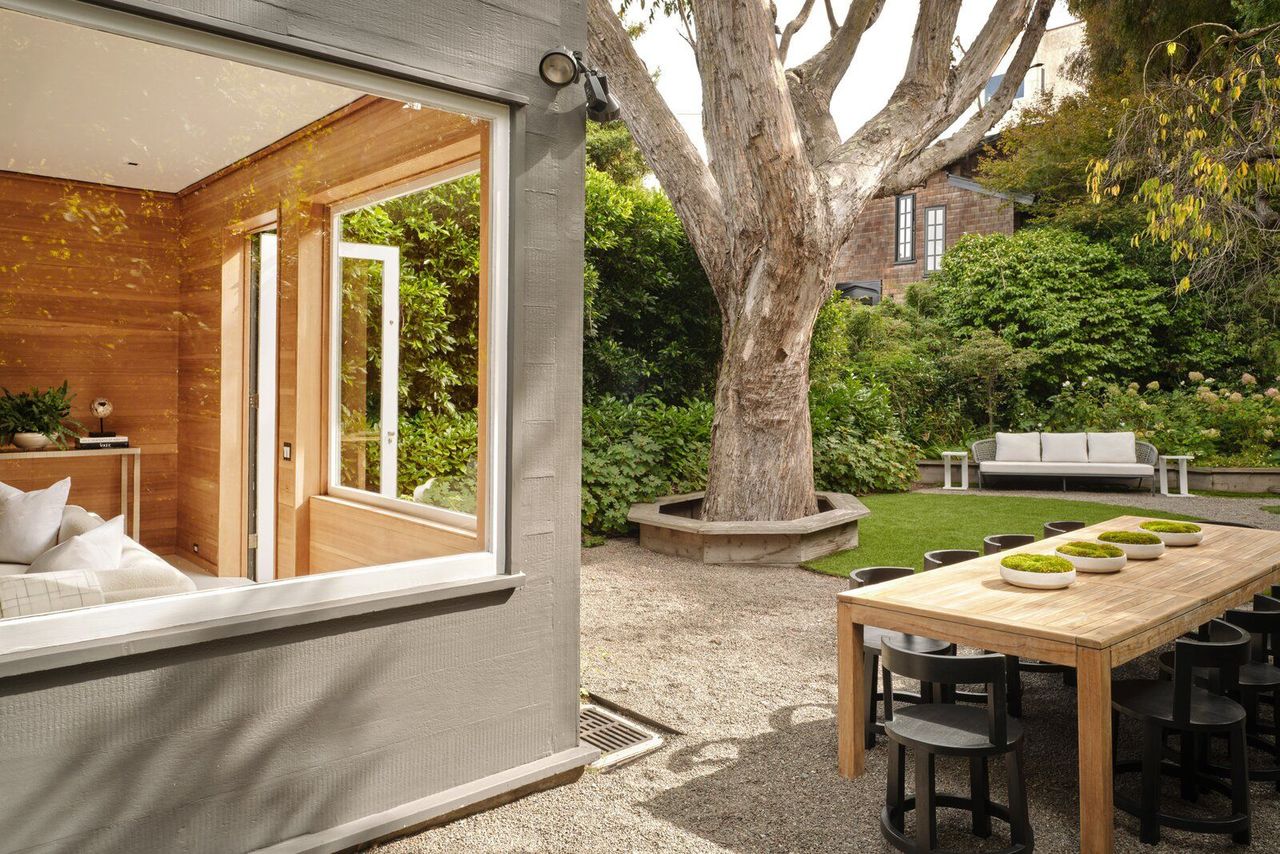
The garden, which combines traditional Olmsted-influenced design elements with modernist sensibilities, was designed by William Wurster’s frequent collaborator, Thomas Church.
The house was completed in 1940-a transitional time in Wurster’s life and career, when he began to move away from principally designing houses. Wurster also married influential public housing advocate Catherine Bauer that same year, while they were attending the Harvard Graduate School of Design. 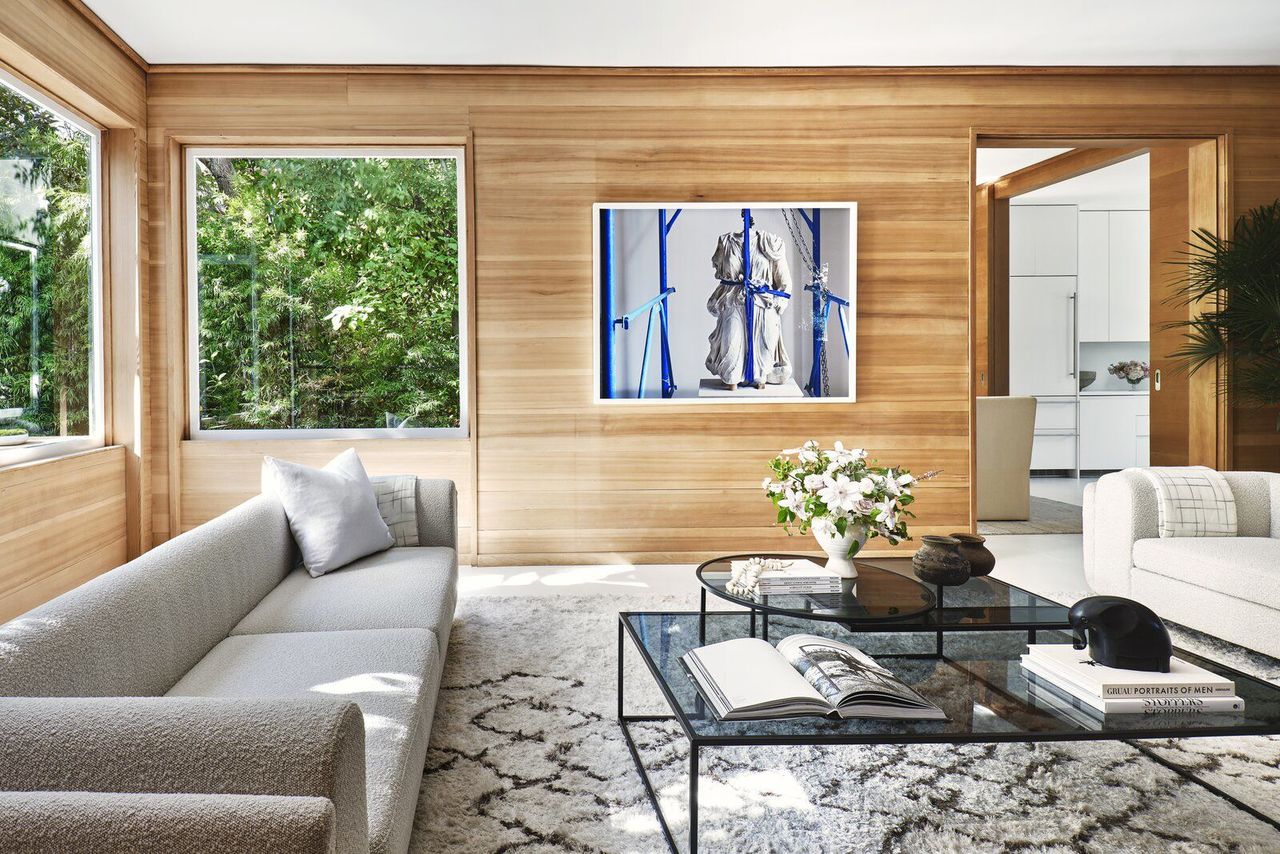
The living room, like the adjacent dining room, opens right onto the garden.
Wurster’s clients for this Pacific Heights house were significant in their own right. During World War II, Harley and Georgiana Stevens both worked for the Office of Strategic Services, the forerunner of the CIA. 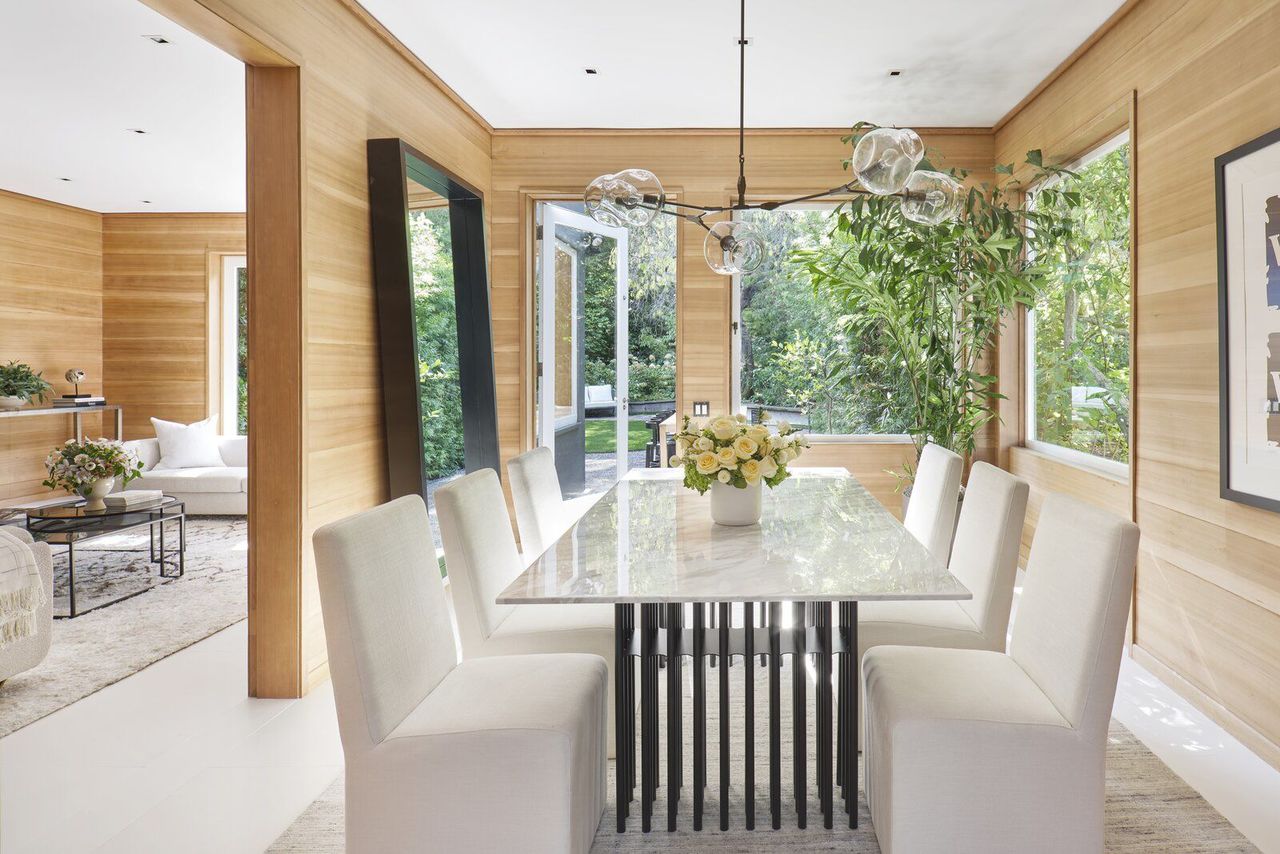
The dining room is especially full of light.
Although they traveled often-during and after the war (including a multiyear stay in Beirut while Harley worked as an oil-industry attorney and Georgiana became a Middle East correspondent for The Atlantic and The Economist)-the couple never let go of their house. After Harley passed in 1959, Georgiana remained here until her own death in 2004.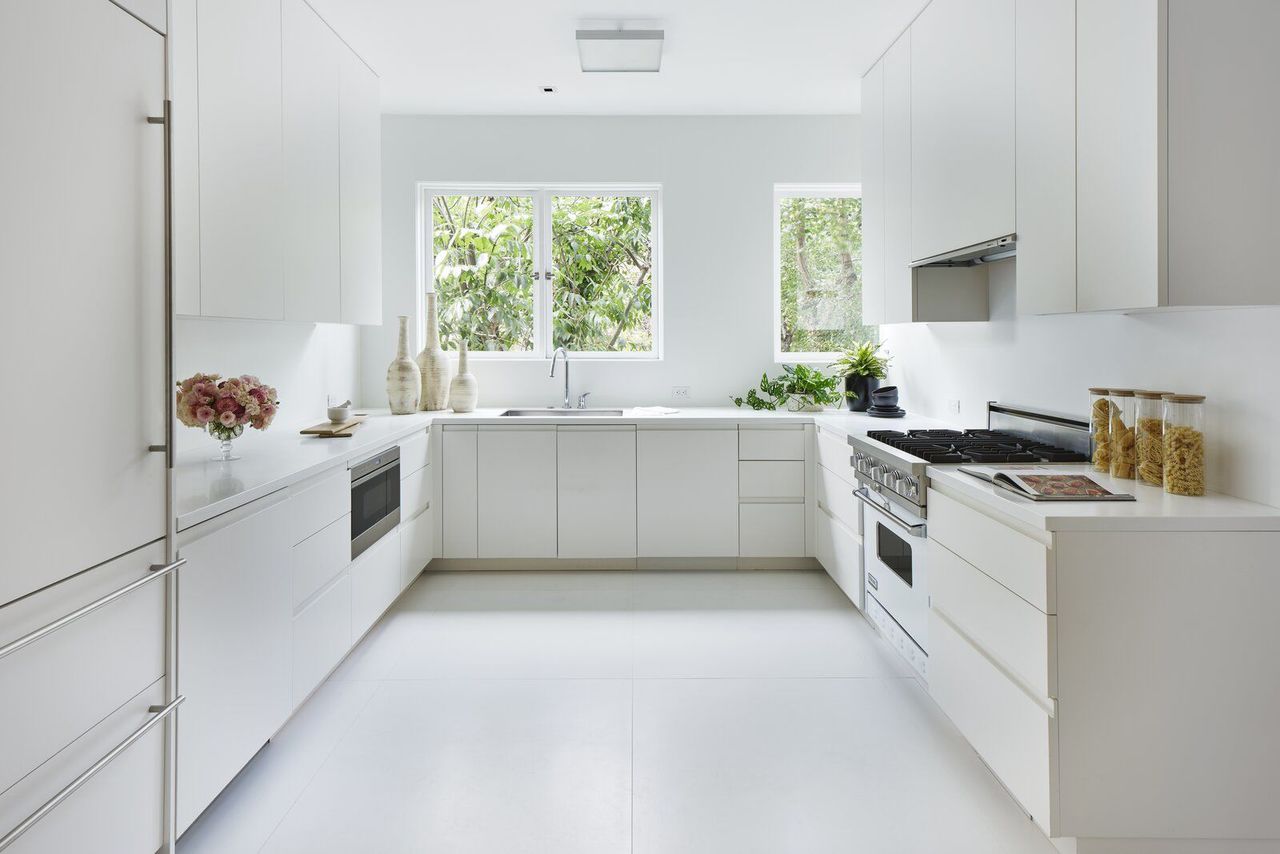
A 2017 remodel by Butler Armsden updated the home’s surfaces-particularly in the kitchen and bathrooms.
San Francisco’s Butler Armsden Architects completely remodeled the four-story house in 2017. "This house, like most of Wurster’s homes, uses simple, unadorned materials-most notably the Douglas fir paneling you find throughout," explains Glenda Flaim, the firm’s managing principal. "It was designed with a flexible, adaptable plan that is still very much relevant to how we live today, and a keen attention to site."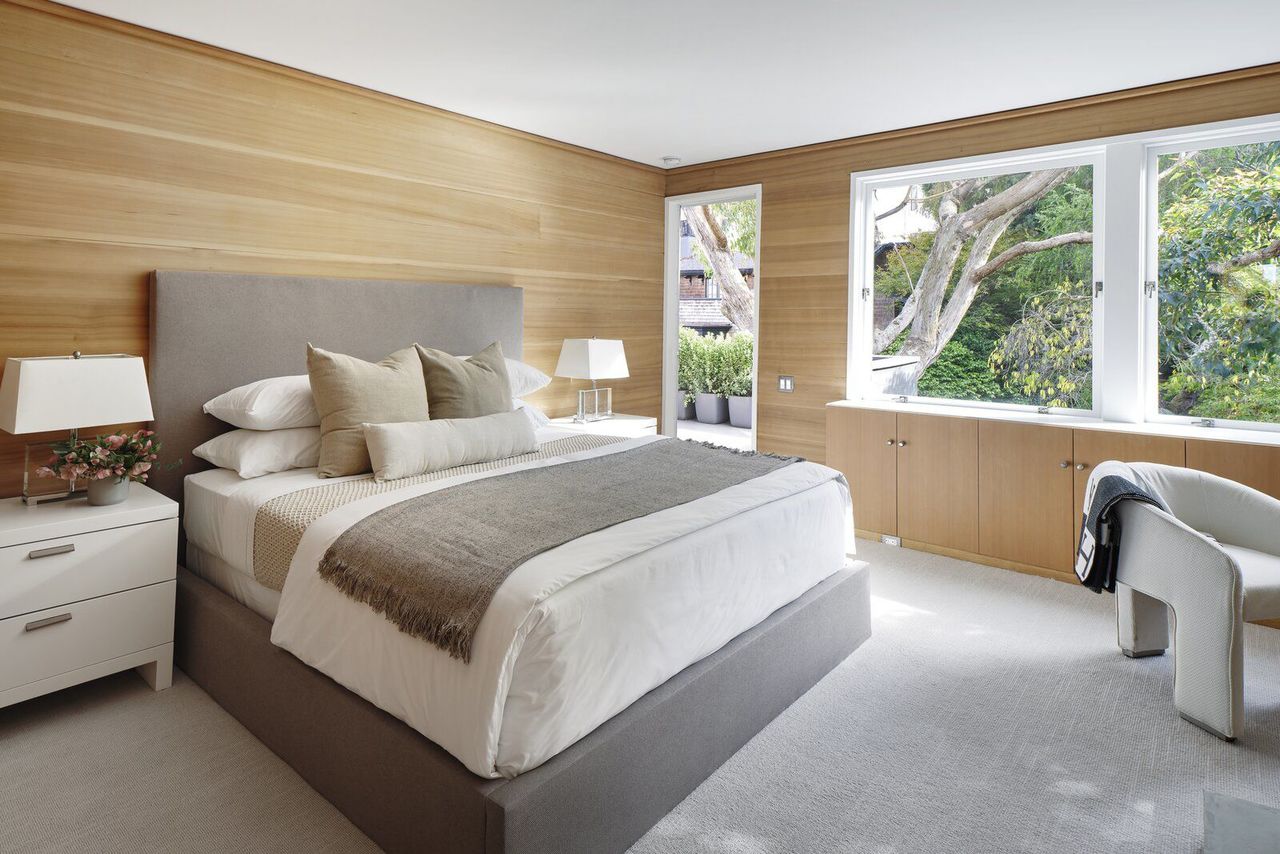
The principal bedroom looks out onto the garden, continuing the palette of Douglas fir paneling.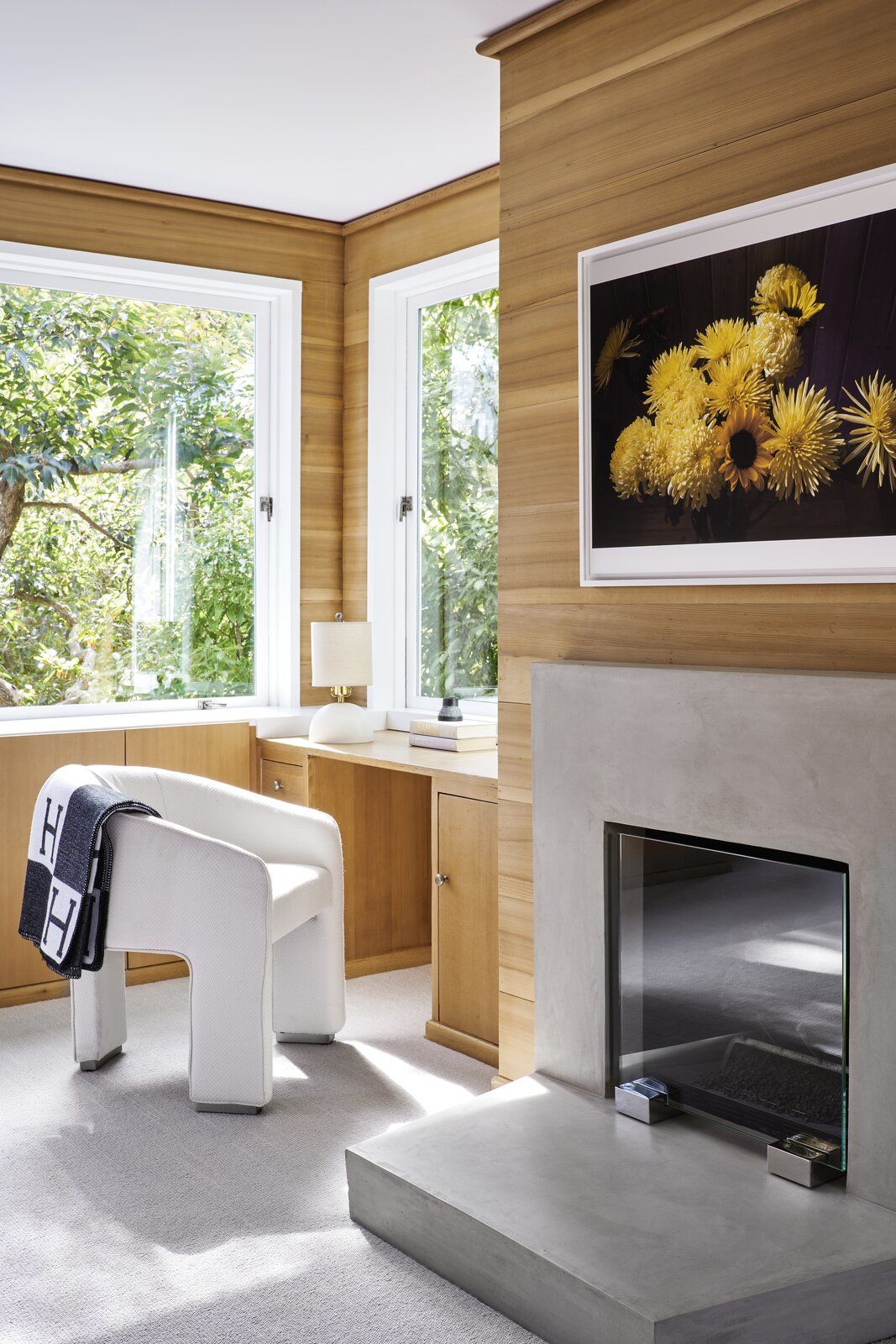
The principal suite also includes its own fireplace.
Indeed, stepping into the home, the Douglas fir walls are astonishingly beautiful. Although this wood can often take on an unpleasant orange tone as it ages, here the panels have been exquisitely preserved, while also showing off a level of precise detail that makes the entire home sing.
"We upgraded the service spaces (bathrooms and kitchen) and restored the beautiful original materials and numerous built-ins," Flaim adds, "but more than anything we worked to preserved the essence of this home."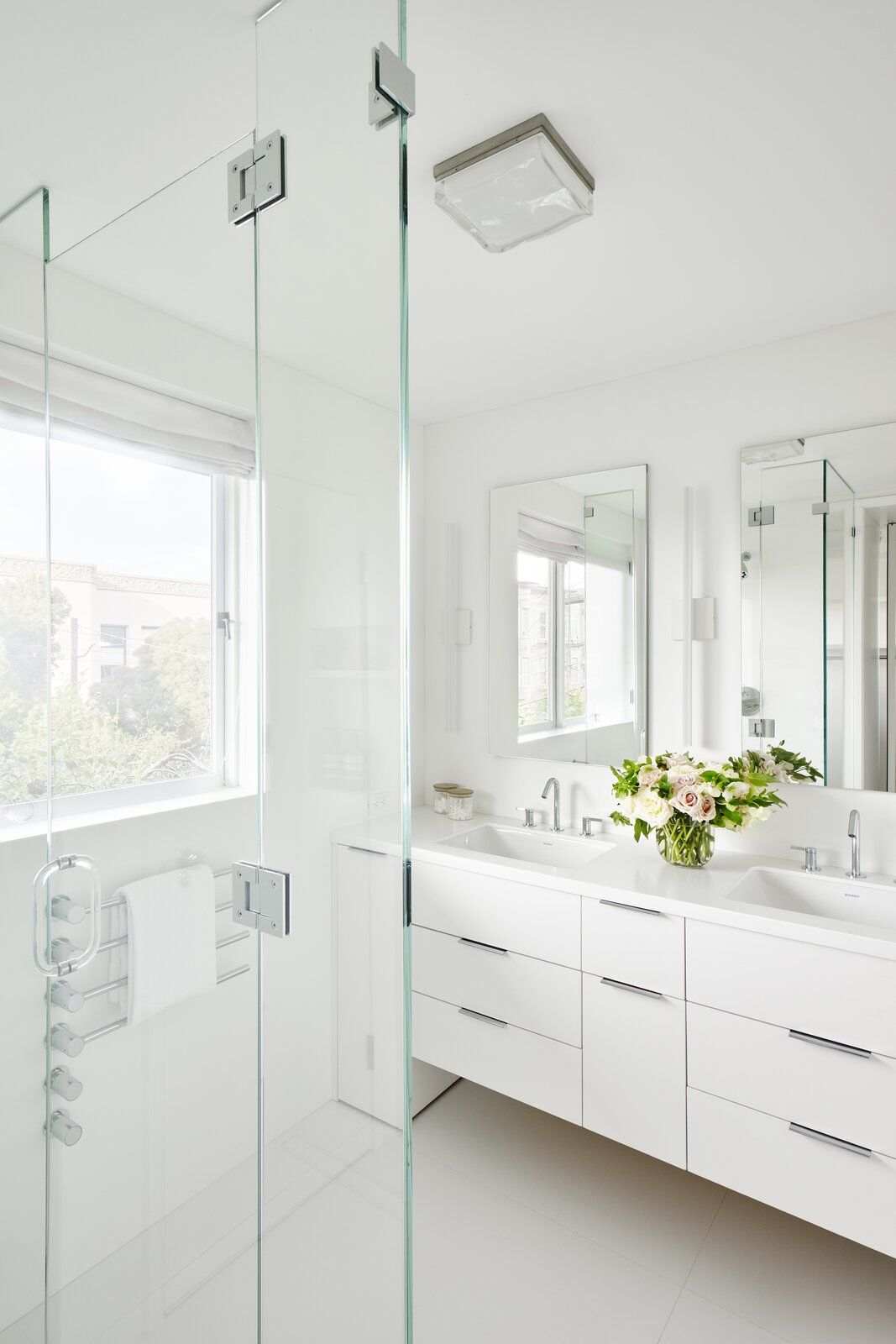
The third-floor principal bath, with its own glass-cubed shower area, looks right onto Green Street.
William Wurster was just one of two significant designers involved with this project. The other was Wurster’s frequent collaborator and fellow University of California professor, landscape architect Thomas Church.
Though Church’s fellow San Francisco designer Lawrence Halprin is often credited with introducing modernist principles to landscape architecture, it was actually Church, born 12 years earlier, who helped pioneer what became known as the California Style of gardens. 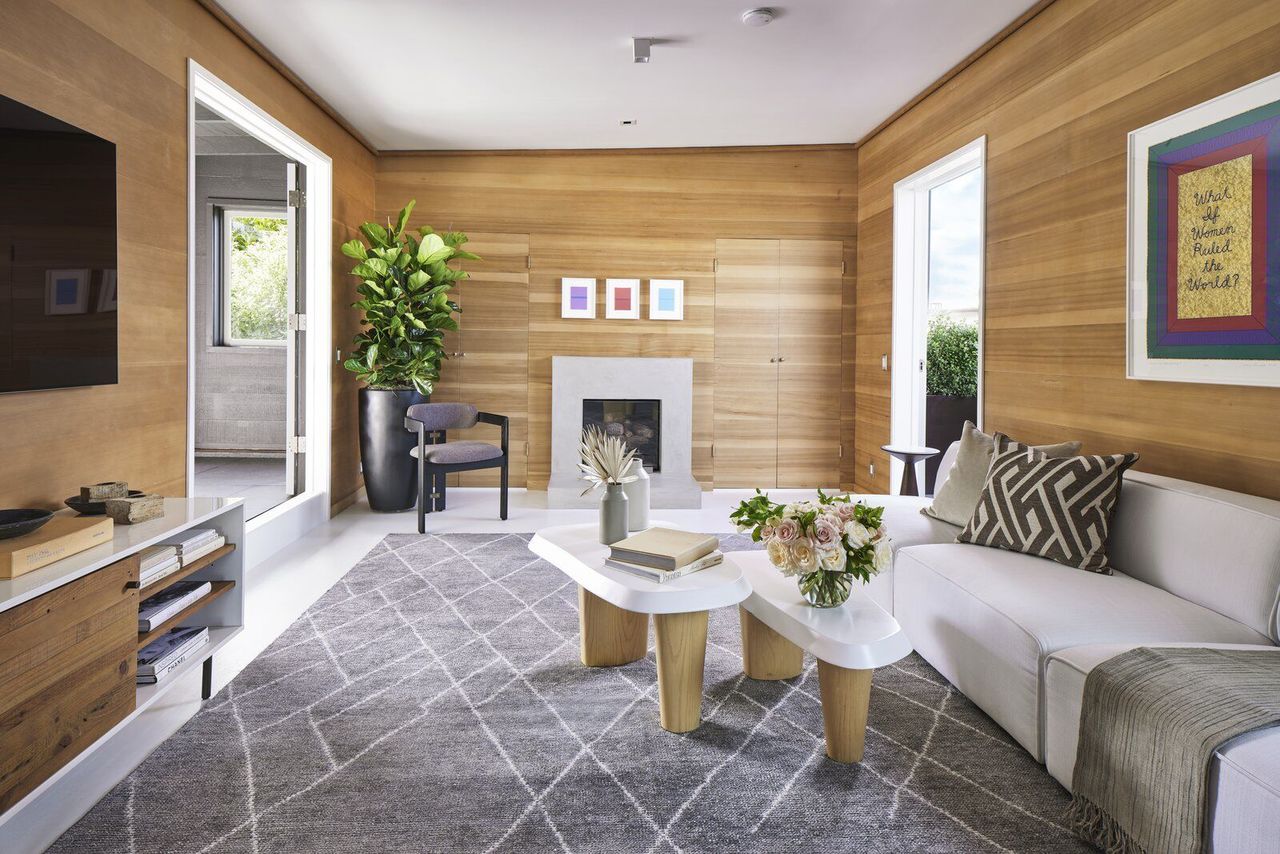
The fourth-floor family room comes with its own deck overlooking the garden.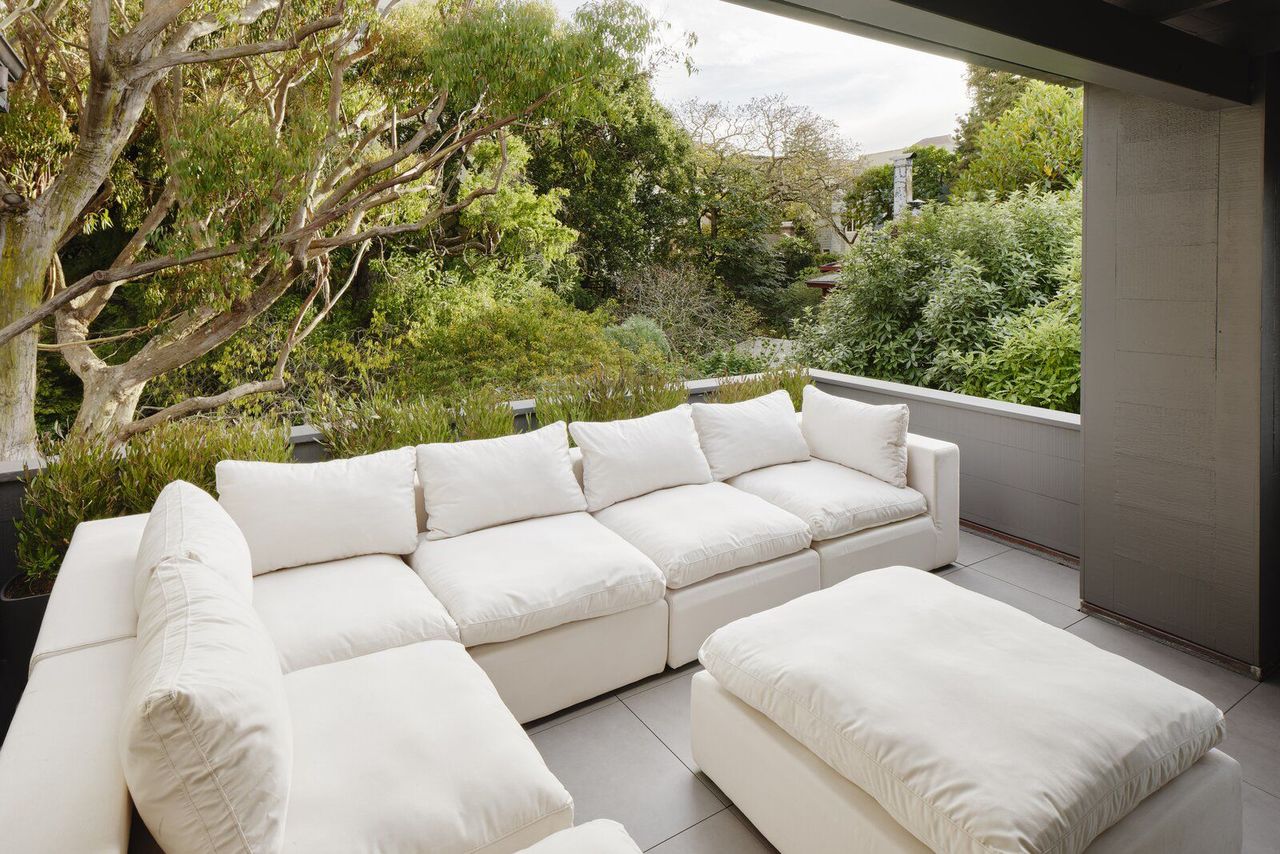
The family room deck extends the space for true California indoor/outdoor living.
Here in Pacific Heights, Church and Wurster created what is aptly described in the real estate listing as "a magical cloistered space with a towering eucalyptus tree, a green lawn and gardens, and an al fresco dining area just off the chic formal dining room." Church’s original landscape design and concept "has been carefully preserved, and adds a sense of place and privacy to the home," Flaim says.
The four-level home’s main kitchen/living/dining area is located on the second level, but because of the site’s slope, these spaces open directly onto the landscaped garden in back. 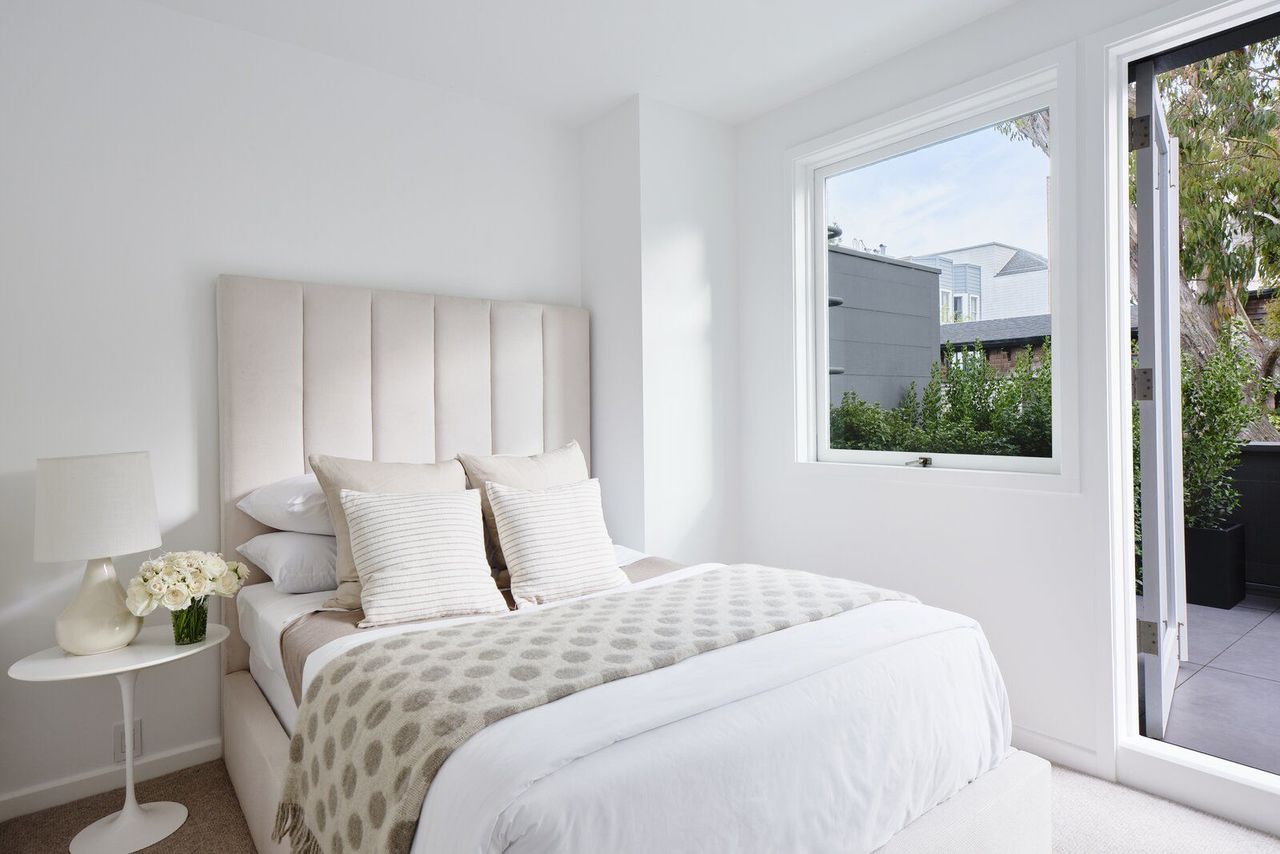
The home’s second-largest bedroom is actually the one that opens onto its own backyard-facing deck.
The second-floor deck feels like its own private treehouse.
One flight up is the principal suite, which has walls clad with that same gorgeous Doug fir paneling, and large windows looking out onto the garden. Adjacent is a guest bedroom with an amenity even the principal bedroom doesn’t have: It opens onto a back deck.
On the top floor is a family room that also spills onto its own deck, facing the street. There’s also an additional bedroom, which can be used as an additional guest space or as a small office. If you don’t feel like climbing three flights of stairs to get there, don’t worry: This house has its own elevator.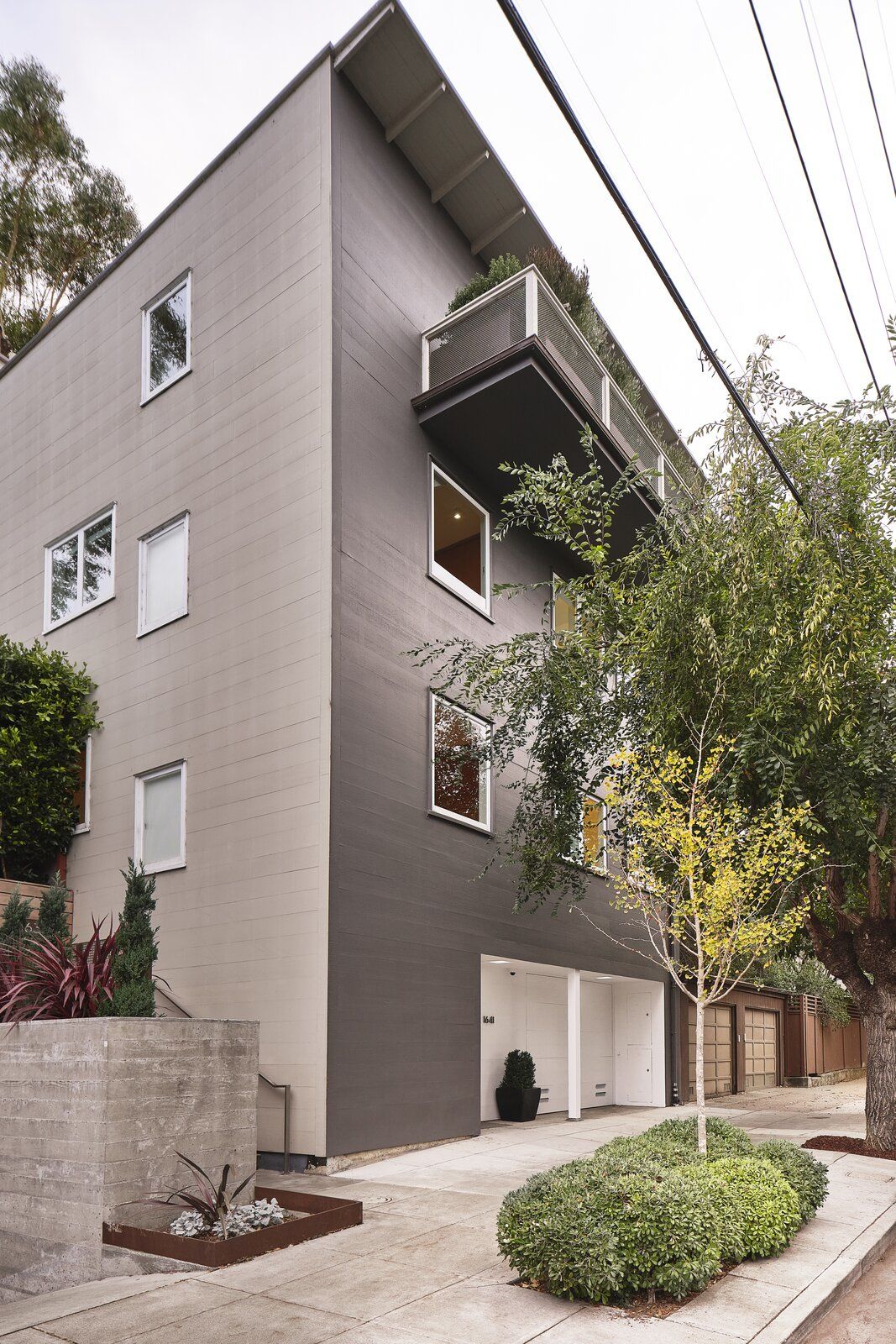
The house, completed in 1940, is uncommonly urban for a William Wurster design. It borrows from Germany’s Bauhaus movement and the work of architects like Walter Gropius.
In a place like Pacific Heights, once named the most expensive neighborhood in America, it’s not just about the house. About 12 blocks west is the Presidio, offering trails and greenery. A few blocks’ walk east brings hundreds of dining options in Chinatown and North Beach.
Even so, this house and its lush garden offer the kind of personal oasis that one may never want to leave.

Tropical Boho Homes With Beautiful Vignettes & Vistas
Two tropical boho home designs, featuring swimming pools, cozy lighting schemes, interior archways, natural accents, and beautiful decor vignettes.


![A Tranquil Jungle House That Incorporates Japanese Ethos [Video]](https://asean2.ainewslabs.com/images/22/08/b-2ennetkmmnn_t.jpg)









